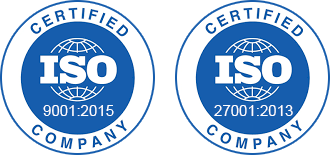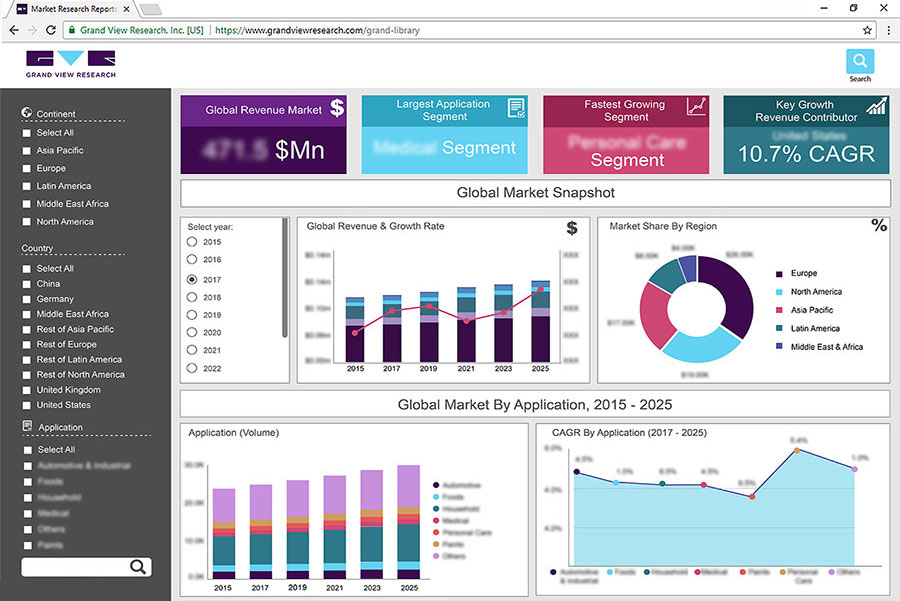
Engineering and Design Services Procurement Intelligence Report, 2023 - 2030 (Revenue Forecast, Supplier Ranking & Matrix, Emerging Technologies, Pricing Models, Cost Structure, Engagement & Operating Model, Competitive Landscape)
- Published Date: ---
- Base Year for Estimate: 2022
- Report ID: GVR-P-UC-137
- Format: Electronic (PDF)
- Historical Data: 2020 - 2021
- Number of Pages: 0
Engineering and Design Services Category Overview
The engineering and design services category is expected to grow at a CAGR of 5.34% from 2023 to 2030. Some of the key reasons anticipated for driving category expansion are the rising demand for the adoption of technology, creative business strategies utilizing enterprise architecture, and the need to meet business requirements to compete in a highly competitive environment. A significant factor driving growth in the Asia-Pacific region, such as India, China, and Japan, is the presence of several design and consulting businesses that use an enterprise architecture (EA) strategy to promote corporate growth. Low-cost labor and major financial investment in infrastructure improvement in these nations are also fueling the region's development.
There is a trend in this category for companies to incorporate new technologies such as artificial intelligence, BIM, drones, 3D printing, 3D laser scanning, augmented reality, reprographics, construction robotics, and prefabrication methods. For instance, construction industries utilize BIM software frequently because it provides 3D drafting, which goes beyond conventional 2D design. The objective of using a BIM solution is to create a 3D model that is quickly accessible. Companies can recognize the connections between different systems, materials, and locations within a physical construction using a 3D model. For instance, Excelize Software Pvt. Ltd, a US-based company, worked on an international airport terminal project by creating a BIM model. It included clash tracking and resolution, as well as crucial coordination between the architectural, structural, and services teams. For this, the supplier made use of a team of modelers and coordinators, both on-site and off-site, to establish the model resolutions and produce the model at LOD 300.
The cost components included in this market are labor, engineering and design costs, equipment, software and technology costs, facilities and rent, and other administrative and overhead expenses. Design plays a vital role in the cost structure as it is a prime stage of the engineering and design service category. The entire planning and execution of any project depends on this component due to the elements involved in the design stage such as the design draft, plan of action, budget estimation as well as the smallest detail like material, part components, and overall layout. Design costs also include material cost for machine design, raw material selection such as metals, polymers, ceramics, and composites, ideation stage cost, prototype cost, hardware engineering cost, and certifications cost. The factors influencing machine design cost are cost-effective raw material selection such as mild steel, copper, aluminum, nickel, machine wear and tear capabilities, lubricant cost, certification cost (such as OHSA and ANSI required for safety measures), and material’s weight and dimension capabilities which can ease assembly. The average cost incurred to hire a mechanical engineer ranges from USD 46 to USD 50 per hour in the U.S. The pay rate varies depending on the scope of work and experience. For instance, a mechanical engineer can charge between USD 30 to USD 65 per hour, HVAC mechanical engineer pay rates range from USD 40 to USD 50 per hour whereas a nuclear engineer charges over USD 90 to USD 95 per hour. Distribution costs are one of the expenses that must be incurred for any product. The need to move goods from one country to another or from warehouse to store may occasionally be necessary, which will have an impact on the ultimate cost. For instance, the suppliers would need to evaluate and analyze the distribution costs specific to the product and location if the product were created in India and was to be shipped to Germany. This would result in different prices depending on the aforementioned aspects.
India's conventional power generating and refining capacities are anticipated to double over the next decade due to a rising GDP. India is one of the top preferred destinations for engineering outsourcing for organizations engaged in engineering procurement and construction (EPC), and as a result, design and engineering work for many international projects are being completed in India. Being one of the top emerging markets, companies prefer India due to its availability of skilled workforce, second largest English-speaking population, and cost-effectiveness. Some of the other preferred destinations to source these services are Canada, China, and France. Canada is preferred due to its robust economy and high availability of natural resources for engineering purposes. These factors make it beneficial for developed countries to outsource and hire engineering from these countries.
Identifying a company that has comprehensive technology capabilities to effectively manage the EPC and operational and maintenance phases, setting up a budget for each design cost stage, evaluating the product development process, and incorporating certificates such as ASME Certification are some of the best practices considered in this category. The advantages of connecting these large-scale enterprise systems across diverse databases and diverse platforms are driving demand for an adequate and integrated technology solution. Budgets are set by companies, and then suppliers are identified who possess the necessary design and technological expertise as well as the commitment to ongoing research and development. Choosing the lowest-priced company may result in inferior products or products that are never created at all.
Engineering and Design Services Procurement Intelligence Report Scope
|
Report Attribute |
Details |
|
Engineering and Design Services Category Growth Rate |
CAGR of 5.34% from 2023 to 2030 |
|
Base Year for Estimation |
2022 |
|
Pricing growth Outlook |
3% - 4% (Annually) |
|
Pricing Models |
Fixed pricing model |
|
Supplier Selection Scope |
Cost and pricing, Past engagements, Productivity, Geographical presence |
|
Supplier Selection Criteria |
Engineering disciplines (civil; structural; mechanical; piping; control, electrical, etc.), Technologies (BIM, laser scanning, drones, prefabrication techniques, etc.), modeling systems (3D, 4D, and 5D), and Others, Technical specifications, Operational capabilities, Regulatory standards and mandates, Category innovations, and others |
|
Report Coverage |
Revenue forecast, supplier ranking, supplier matrix, emerging technology, pricing models, cost structure, competitive landscape, growth factors, trends, engagement, and operating model |
|
Key companies profiled |
Jacobs Engineering Group, AECOM, Ramboll Group, Dar Group, Hatch Group, Nippon Koei Group, Bechtel Corporation, Fluor Corporation, Michael Baker International, STV Group, and Gannett Fleming |
|
Regional scope |
Global |
|
Revenue Forecast in 2030 |
USD 1,635.94 billion |
|
Historical data |
2020 - 2021 |
|
Quantitative units |
Revenue in USD billion and CAGR from 2023 to 2030 |
|
Customization scope |
Up to 48 hours of customization free with every report |
|
Pricing and purchase options |
Avail customized purchase options to meet your exact research needs. Explore purchase options |
Frequently Asked Questions About This Report
b. The global engineering and design services category size was valued at approximately USD 1,079 billion in 2022 and is estimated to grow at a CAGR of 5.34% from 2023 to 2030.
b. There is an increased demand for technologies such as building information modeling, AI, 3D Printing, and digitalization which is driving the growth of the category.
b. Countries such as Canada, India, China, and France are the ideal destinations to hire engineers for sourcing engineering and design services.
b. This category is fragmented with several small, medium-sized, and large players. Some of the key players are Jacobs Engineering Group, AECOM, Ramboll Group, Dar Group, Hatch Group, Nippon Koei Group, Bechtel Corporation, Fluor Corporation, Michael Baker International, STV Group, and Gannett Fleming
b. Labor, engineering and design costs, equipment, software and technology costs, facilities and rent, and other administrative and overhead expenses are some of the costs associated with this market.
b. Identifying a comprehensive technology capabilities company, setting up a budget for each design cost stage, evaluating the product development process, and incorporating certificates such as ASME Certification are some of the best practices considered in this category.
Add-on Services
Should Cost Analysis
Component wise cost break down for better negotiation for the client, highlights the key cost drivers in the market with future price fluctuation for different materials (e.g.: steel, aluminum, etc.) used in the production process
Rate Benchmarking
Offering cost transparency for different products / services procured by the client. A typical report involves 2-3 case scenarios helping clients to select the best suited engagement with the supplier
Salary Benchmarking
Determining and forecasting salaries for specific skill set labor to make decision on outsourcing vs in-house.
Supplier Newsletter
A typical newsletter study by capturing latest information for specific suppliers related to: M&As, technological innovations, expansion, litigations, bankruptcy etc.




